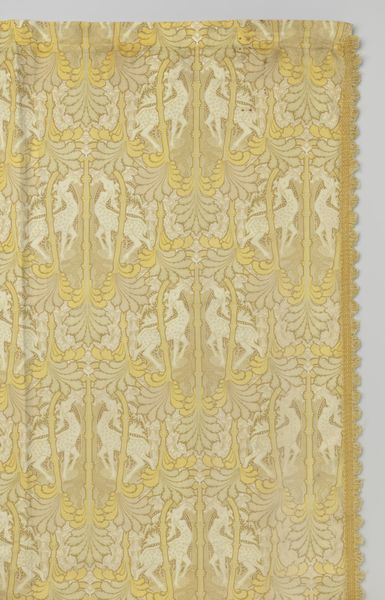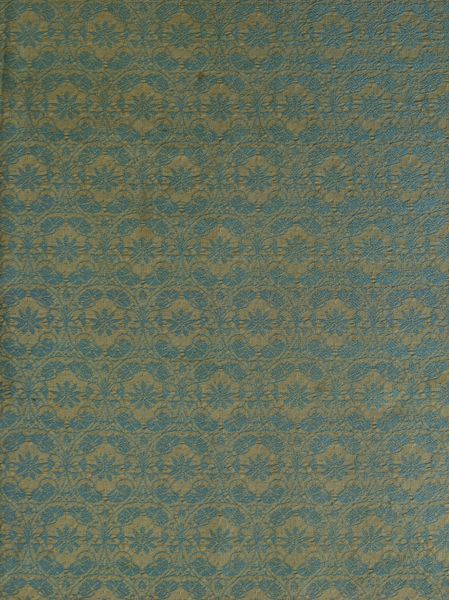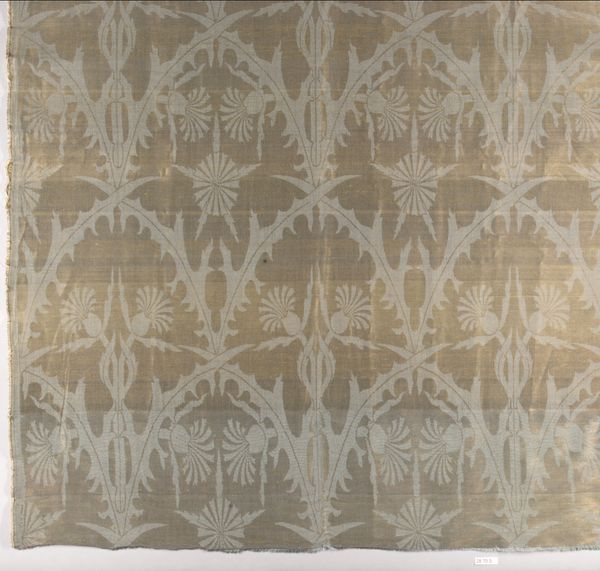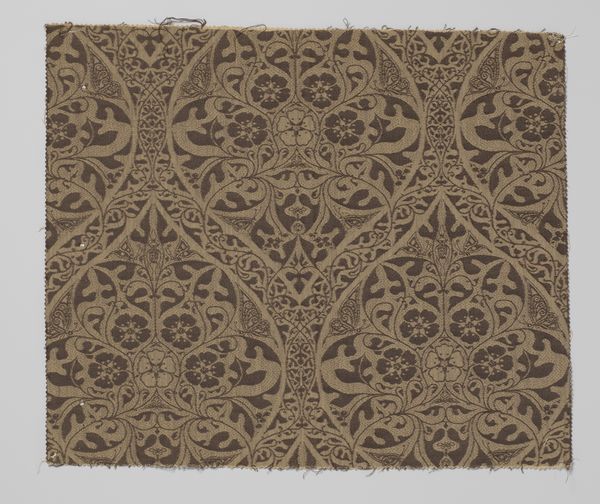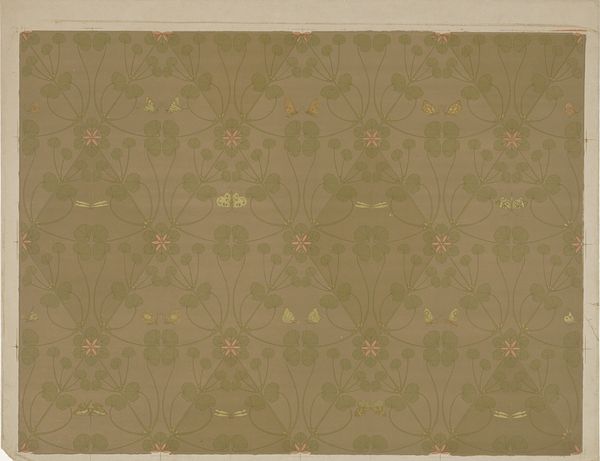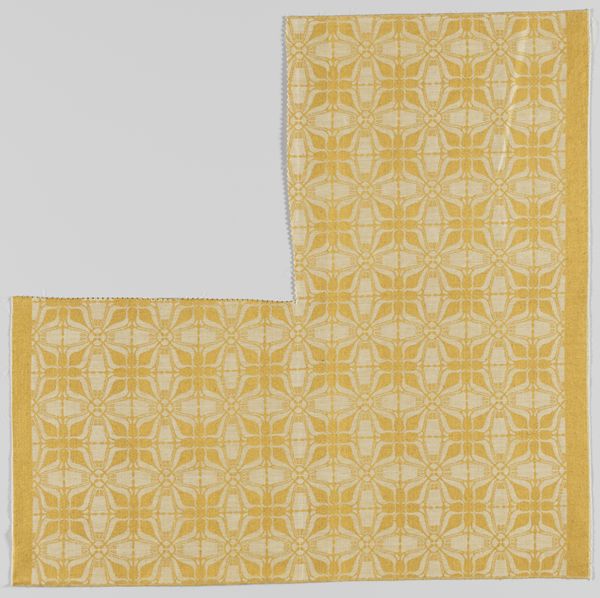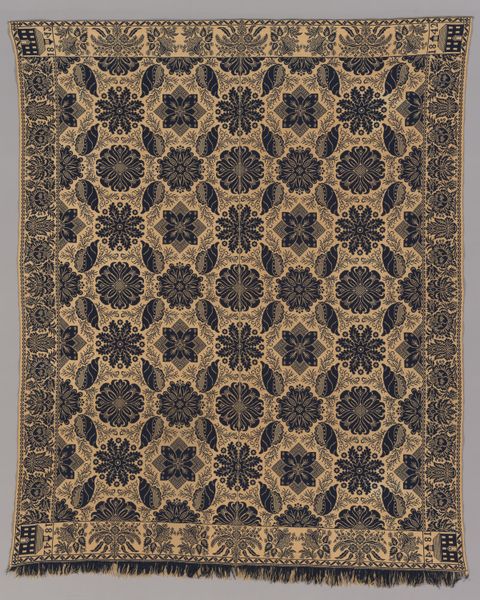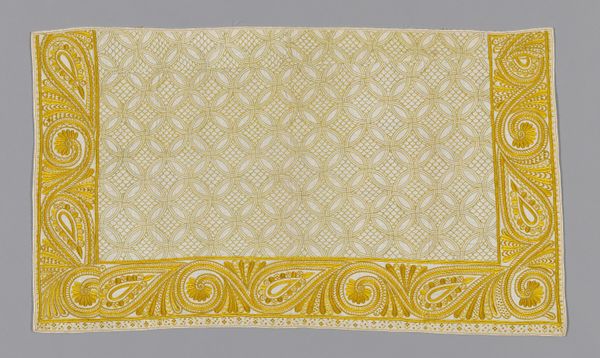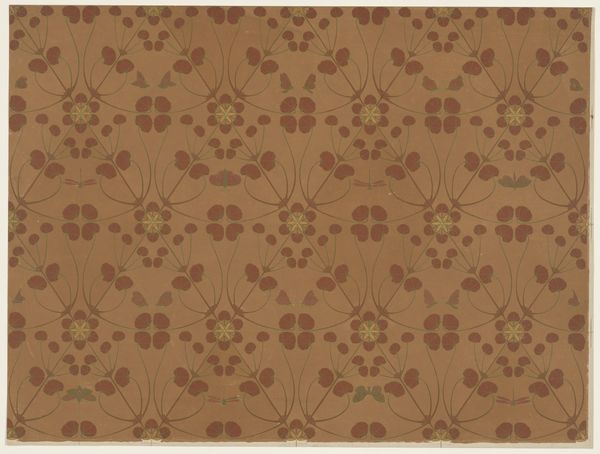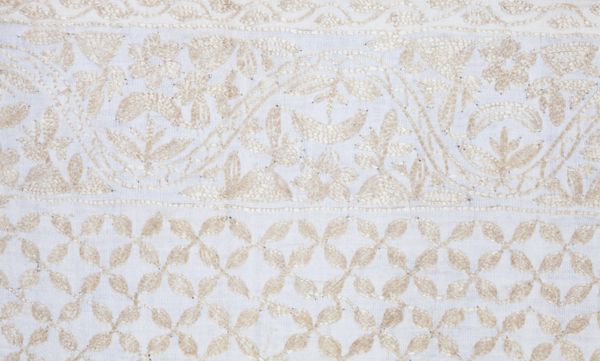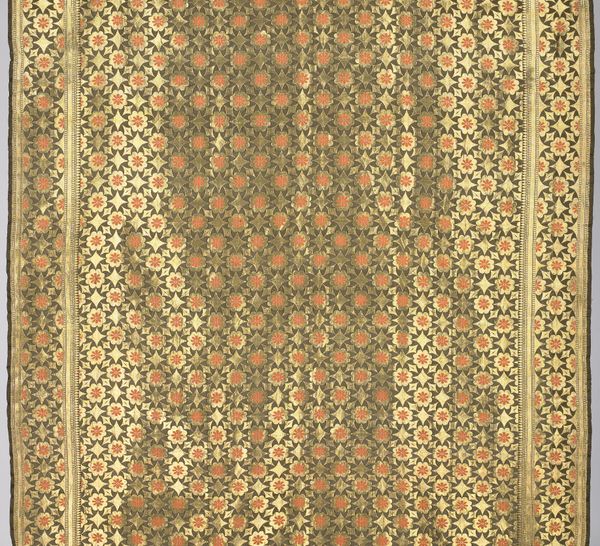
textile
#
textile
#
geometric pattern
#
geometric
#
decorative-art
Dimensions: height 285 cm, width 180 cm
Copyright: Rijks Museum: Open Domain
Editor: This textile artwork titled "Gordijn," was created sometime between 1880 and 1949 by Theo Nieuwenhuis and is currently housed in the Rijksmuseum. The intricate geometric pattern is really mesmerizing, it feels almost like a comforting, repeated motif. What do you see in this piece? Curator: I see echoes of cultural memory embedded within that geometric pattern. It speaks to me of ancient, repeated designs meant to ward off chaos, an urge toward order inherent in the human psyche, wouldn't you agree? The repeated teardrop or 'boteh' motif—familiar across Persian and Indian textiles—it's a seed, a life-giving symbol, even when it's integrated into a western decorative setting, such as here, don't you think the cultural echo sustains itself? Editor: I suppose, but given it's just textile and part of the "Pattern and Decoration" movement, doesn't that diminish any symbolic reading by suggesting its more superficial? Curator: The interesting thing about visual language is how forms outlive any supposed initial function. Regardless of its role as merely 'decorative,' these patterns tap into deeply-ingrained symbols within our collective unconscious. Think of mandalas, which Carl Jung thought embodied universal archetypes for the ordering of psychological chaos... even the simple act of repetition is imbued with an emotional meaning. How does its repetitive quality makes you feel? Editor: Well, I find the Gordijn reassuring, in a way. And the uniformity implies some sort of social cohesion...a unity through visual agreement maybe? Curator: Exactly! A silent agreement on a visual vocabulary. We create order through shared symbols. That agreement itself becomes symbolic, laden with cultural significance. A simple curtain then is actually echoing complex memories and aspirations. Editor: I never considered how a "simple" design could have so much meaning imbued in its geometry. Curator: It's through exploring these layers of historical and psychological resonance that even decorative pieces begin speaking volumes about who we are, and where we come from.
Comments
No comments
Be the first to comment and join the conversation on the ultimate creative platform.
